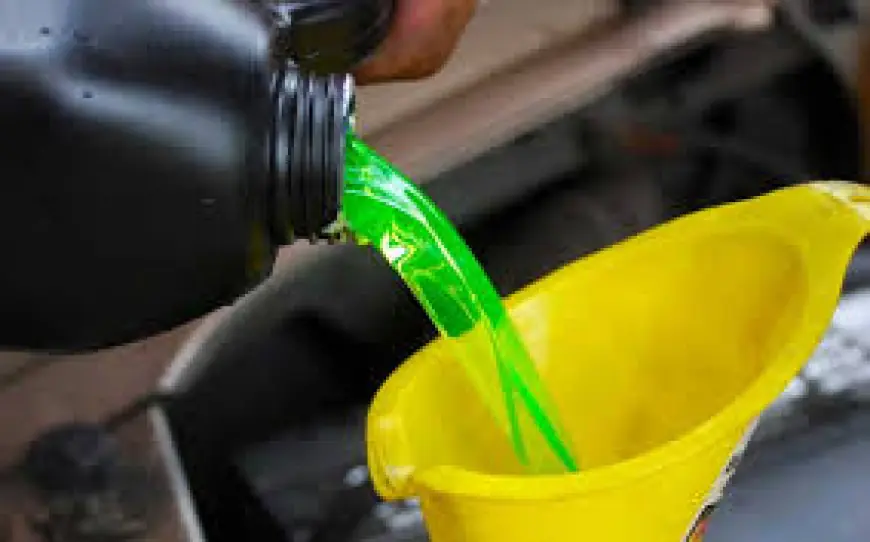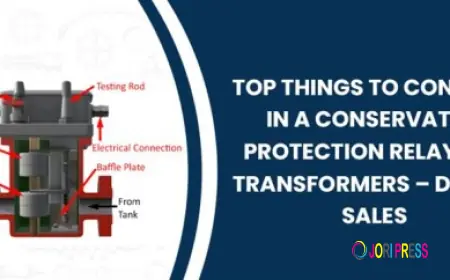Australia Automotive Coolant Market 2030F Industry Growth
Technological advancements in automotive fluids are also shaping the market. Modern vehicles, including electric and hybrid models, have specific coolant needs, fueling innovation in the sector.

Introduction
The automotive industry in Australia is undergoing a significant transformation, shaped by technological advancements, environmental considerations, and evolving consumer preferences. One of the critical components underpinning vehicle performance and longevity is the automotive coolant—a fluid vital for regulating engine temperature, preventing overheating, and protecting against corrosion.
According to recent industry assessments, the Australia Automotive Coolant Market was valued at USD 352.69 million in 2024 and is projected to reach USD 521.38 million by 2030, growing at a CAGR of 6.80% during the forecast period. This robust growth trajectory is being fueled by factors such as increased vehicle ownership, longer vehicle lifespans, and heightened awareness regarding preventive engine maintenance.
The coolant market’s evolution is no longer limited to basic anti-freeze solutions; it now encompasses advanced formulations, longer service life products, and eco-friendly alternatives designed to meet the demands of modern vehicles.
Market Dynamics
Rising Vehicle Ownership and Fleet Expansion
Australia has witnessed consistent growth in vehicle ownership, particularly in passenger cars and commercial fleets. This expansion directly correlates with demand for regular coolant replacements to ensure engine efficiency and prevent breakdowns.
Extended Vehicle Lifespans
Unlike previous decades where vehicles were frequently replaced within 5–7 years, Australian consumers today retain cars for longer durations. Extended lifespans necessitate ongoing coolant maintenance, driving up aftermarket demand.
Harsh Climate Conditions
Australia’s climate, with its extreme heat in regions like Northern Territory and cold winters in areas like Tasmania, puts additional strain on engines. High-performance coolants capable of handling temperature fluctuations are in greater demand, ensuring year-round engine protection.
Download Free Sample Report: https://www.techsciresearch.com/sample-report.aspx?cid=5005
Segmentation Analysis
By Technology
- Inorganic Acid Technology (IAT)
- Based on silicates and phosphates.
- Shorter service life (2–3 years).
- Preferred for older vehicles and heavy-duty applications.
- Organic Acid Technology (OAT)
- Uses organic acids for corrosion resistance.
- Extended service intervals (up to 5 years).
- Environmentally friendly, with no harmful silicates or phosphates.
- Increasingly popular in modern vehicles.
- Hybrid Organic Acid Technology (HOAT)
- A blend of IAT and OAT features.
- Offers extended service life (3–5 years).
- Balances corrosion protection with durability.
- Suitable for newer vehicles with advanced cooling systems.
By Vehicle Type
- Passenger Cars
The largest segment, driven by urbanization, personal vehicle ownership, and demand for efficient cooling solutions. - Commercial Vehicles
Trucks and buses require high-performance coolants due to heavy-duty operations and long-distance travel. - Two-Wheelers
A smaller but growing segment, particularly in urban areas where motorcycles and scooters are popular.
By Demand Category
- OEM (Original Equipment Manufacturer)
Coolants supplied directly during vehicle production. - Replacement (Aftermarket)
A dominant segment, driven by rising vehicle lifespans and frequent servicing needs.
Regional Insights
Victoria: The Fastest Growing Region
In 2024, Victoria emerged as the leading region in the Australia automotive coolant market. Several factors contribute to this:
- Large vehicle fleet size.
- Extreme climate variations between urban Melbourne and rural areas.
- Strong automotive aftermarket sector.
- Growing consumer preference for long-life and eco-friendly coolant solutions.
Victoria’s rising adoption of Organic Acid Technology (OAT) and Hybrid Organic Acid Technology (HOAT) demonstrates the shift toward advanced coolant formulations that extend engine life and reduce environmental impact.
Emerging Trends
1. Eco-Friendly & Biodegradable Coolants
As sustainability becomes a national priority, manufacturers are developing non-toxic, biodegradable coolants that minimize harm to the environment. These products are gaining traction among environmentally conscious consumers.
2. Long-Life Coolants
Consumers are seeking coolants with extended service intervals, reducing the need for frequent replacements. OAT and HOAT formulations are expanding in popularity due to their durability.
3. Specialized Coolants for EVs and Hybrids
The rise of electric and hybrid vehicles is creating demand for specialized coolants that manage the thermal requirements of batteries and power electronics, signaling a shift in product innovation.
4. Digitalization in Coolant Management
Fleet operators are increasingly adopting predictive maintenance technologies. Advanced monitoring systems help track coolant condition, optimizing replacement schedules.
5. Premiumization of Products
With rising disposable incomes, Australian consumers are gravitating toward premium products offering better engine protection, improved corrosion resistance, and fuel efficiency benefits.
Market Drivers
Growing Vehicle Population
A consistently expanding vehicle fleet ensures a steady stream of demand for automotive coolants across both passenger and commercial segments.
Climate Challenges
Australia’s diverse climate reinforces the importance of coolants capable of withstanding high and low extremes, driving innovation in formulation.
Shift Toward Eco-Friendly Products
Government initiatives promoting sustainability are encouraging the adoption of eco-friendly coolants that align with environmental goals.
Longer Vehicle Lifespans
With vehicles being kept in service for longer periods, the aftermarket replacement segment is becoming a major growth engine.
Electrification of Mobility
The increasing adoption of EVs and hybrids is pushing coolant manufacturers to innovate and develop thermal management fluids tailored to these vehicles.
Industry Key Highlights
- Market valued at USD 352.69 million in 2024, projected to reach USD 521.38 million by 2030.
- CAGR of 6.80% during the forecast period.
- Victoria identified as the fastest-growing regional market.
- Shift from Inorganic Acid Technology (IAT) to OAT and HOAT formulations.
- Growing adoption of eco-friendly and long-life coolants.
- Increasing demand for specialized EV coolants.
Competitive Landscape
The Australia Automotive Coolant Market is moderately consolidated, with both international giants and local manufacturers competing through innovation, product diversification, and distribution strategies.
Major Players Include:
- Ampol Limited
- Shell Australia Pty Ltd
- Castrol Limited
- Gulf Western Oils Pty Ltd
- Oil & Energy Pty Ltd
- Redline Oil Australia Pty Ltd
- Old World Industries LLC
- Nulon Products Australia Pty Ltd
- TotalEnergies Marketing Australia Pty Ltd
- Dayco Australia Pty Ltd
Competitive Strategies:
- Launch of eco-friendly and long-life coolant products.
- Strategic partnerships with OEMs and dealerships.
- Expansion of aftermarket distribution networks.
- Focus on product differentiation for EVs and hybrids.
Future Outlook
The Australia automotive coolant market is on track for strong growth, driven by:
- Increased EV penetration creating new product demand.
- Rising consumer preference for durable and sustainable coolants.
- Government emphasis on environmental sustainability and clean technologies.
- Growth in the commercial fleet and logistics sector, fueling coolant replacements.
- Advances in coolant chemistry and formulations offering greater efficiency.
By 2030, Australia’s coolant market will not only serve as a critical enabler of vehicle efficiency but will also play a central role in shaping the sustainability profile of the automotive industry.
10 Benefits of the Research Report
- Provides comprehensive market sizing and growth forecasts up to 2030.
- Offers detailed segmentation by technology, vehicle type, demand category, and region.
- Highlights key market drivers, challenges, and opportunities.
- Identifies emerging trends, including eco-friendly and EV-focused coolants.
- Analyzes competitive landscape and strategies of leading players.
- Evaluates regional growth opportunities, with insights into high-potential states like Victoria.
- Supports investment decision-making for stakeholders.
- Assists OEMs and aftermarket businesses in developing growth strategies.
- Highlights regulatory influences and sustainability considerations.
- Provides actionable insights for distributors and retailers to expand market presence.
Conclusion
The Australia Automotive Coolant Market is entering a phase of innovation and transformation. With increasing demand for long-life, environmentally friendly, and specialized coolants for emerging vehicle technologies, the market presents lucrative opportunities for manufacturers, distributors, and investors.
As Australia’s automotive sector continues to expand and modernize, the role of advanced coolant solutions in ensuring vehicle efficiency, sustainability, and longevity will become even more pronounced. Stakeholders who align with the trends of sustainability, technological innovation, and evolving consumer preferences will be best positioned to capitalize on this growing market.
Contact Us-
Mr. Ken Mathews
708 Third Avenue,
Manhattan, NY,
New York – 10017
Tel: +1-646-360-1656
Email: [email protected]
Website: www.techsciresearch.com
What's Your Reaction?
 Like
0
Like
0
 Dislike
0
Dislike
0
 Love
0
Love
0
 Funny
0
Funny
0
 Angry
0
Angry
0
 Sad
0
Sad
0
 Wow
0
Wow
0


















































